Contemporary Church History Quarterly
Volume 20, Number 4 (December 2014)
Review Article: The Vatican and the United States during the Interwar Era
By John S. Conway, University of British Columbia
Luca Castagna, A Bridge across the Ocean: The United States and the Holy See Between the Two World Wars (Washington, D.C.: The Catholic University of America Press, 2014), Pp. xvii + 193, ISBN 978-0-8132-2587-0.
C. Gallacher, D. Kertzer and A. Melloni, eds., Pius XI and America (Berlin: LIT Verlag, 2012), Pp. 450, ISBN 978-3-643-90146-9.
The Vatican is the world’s oldest diplomatic entity. But in the last two centuries it was confronted with challenges and set-backs which threatened its very survival. In the mid-nineteenth century it was robbed of its long-held territories by the upstart new Kingdom of Italy and reduced to a small sliver of land in the heart of Rome. At the same time Pope Pius IX retreated into a theological obscurantism which led the church in hostility to any modern patterns of thought. The nadir of the Vatican’s diplomatic influence was, quite possibly, the era of the First World War, when a combination of intrigues by the new Italian government and the anti-Catholic obstinacy of the White Anglo-Saxon Protestant President Woodrow Wilson barred the Vatican from the Paris peace conference and the Versailles settlement which resulted. At the same time, the United States saw a resurgence of anti-Catholic nativism and the revival of the Ku Klux Klan, with its vociferous outbursts against Catholics, Jews and blacks. For its part, the Vatican was engrossed with trying to establish a set of legally-binding agreements or concordats with the numerous new states which had arisen in the wake of the war. These were supposed to secure the position of Catholic institutions and personnel, but, as the case of the German Concordat signed in 1933 was to show, the results were mixed. In fact, almost immediately protests were launched with the German Foreign Ministry about breaches of the agreement, but no satisfaction was ever given.
The situation in the United States did not improve until the election of Franklin Roosevelt in 1932. His campaign for social reform in the New Deal was widely welcomed by the under-class which included many poor, immigrants and Catholics. The Catholic social work community was particularly impressed, and indeed this move paid off handsomely politically when Roosevelt swept many states into the Democratic fold in 1936. This convergence of ideas in the New Deal and the Catholic Church’s social doctrine, as expressed by the National Catholic Welfare Conference, opened the way for a new relationship of mutual collaboration. This also resulted in an unprecedented participation of Catholics in the national sociopolitical context.
In the 1930s, the resurgence of nationalist antagonisms, especially sponsored by the totalitarian powers, was alarming to both Roosevelt and the Vatican. This alignment of views on their common need to preserve the world for peace and to prevent further conflicts brought the two diplomatic entities closer together, as was symbolized by the highly successful visit of the Cardinal Secretary of State, Pacelli, (later Pope Pius XII) to the United States in 1936. He was even invited to have a meal with the President at his summer retreat in Hyde Park, where doubtless the two men discussed the looming dangers of hostilities in international affairs.
The principal difficulty in this rapprochement arose from the fact that the United States had no diplomatic representation at the Vatican, since such an arrangement had been abandoned in 1857. Roosevelt was well aware that any attempt to persuade Congress to vote the funds necessary for the resumption of diplomatic relations with the Vatican would likely arouse waves of vehement opposition from the extreme Protestant wing, as well as from Isolationists. It would be seen as part and parcel of his attempt to draw America into the vortex of world conflict, and hence would be strenuously opposed.
Roosevelt therefore delayed any decision, which was made even more hazardous by the events in Europe in 1938, with the annexation by the Nazis of Austria, which was initially greeted with acclaim by the leading Austrian Cardinal, for which he was strongly criticized by the Vatican. Isolationists in the United States were joined by some vociferous Catholics, such as the voluble “Radio Priest” Father Charles Coughlin, whose diatribes were undoubtedly followed by many of his followers. On the other hand, the possible outbreak of hostilities in Europe added to Roosevelt’s desire to recruit the aid of the Vatican for the active pursuit of peace. The death of Pope Pius XI in February 1939 and the election of Cardinal Pacelli as the new Pope further held up this process. So it was not until December 1939, after the outbreak of war in Europe, and the conquest of the largely Catholic Poland, that Roosevelt finally turned his long-held desire into reality. He subtly hit on the expedient of not establishing a normal embassy but rather of appointing a Personal Representative of the President, who would have the status but not the title of an Ambassador. His choice fell on the wealthy industrialist Myron Taylor, a Protestant Episcopalian, who arrived in Rome in February 1940, and behaved with impeccable style and astuteness, entirely avoiding any ecclesiastical or theological matters. As such, Roosevelt now had a direct line to the Vatican and readily assented to the vigorous attempts to prevent any escalation of the war’s hostilities, particularly with Italy. Mussolini’s decision in June 1940 to ignore the appeals of Roosevelt and Pius XII and to enter the war with his Nazi partner spelled the failure of these joint efforts to reserve peace and humanity.
 Castagna’s excellently researched examination of the diplomatic archives of both the Vatican and the United States for this short period of twenty years provides a useful extension of comparative diplomatic history. He adds in various papal documents as well as notes the contributions of scholars of this subject in various languages. It is only unfortunate that the papers of Pope Pius XII are still unavailable, so that the next stage of the relationship between the Holy See and the United States, particularly where their policies diverged from 1940 onwards, remains to be told. (For these next events, see J. S. Conway, “Myron C. Taylor’s Mission to the Vatican 1940-1950,” Church History 44, no. 1 (March 1976): 1-15.) It can only be hoped that Castagna, who teaches at the University of Salerno, will be among those scholars invited to follow up this valuable study with a sequel, which could then demonstrate how, in the aftermath of 1945, this relationship actually became the bridge across the ocean of his title. The present short study must therefore be regarded as a prelude, describing the early stages of the thaw in Vatican-American relations which was only fulfilled when full diplomatic relations were finally established in 1984.
Castagna’s excellently researched examination of the diplomatic archives of both the Vatican and the United States for this short period of twenty years provides a useful extension of comparative diplomatic history. He adds in various papal documents as well as notes the contributions of scholars of this subject in various languages. It is only unfortunate that the papers of Pope Pius XII are still unavailable, so that the next stage of the relationship between the Holy See and the United States, particularly where their policies diverged from 1940 onwards, remains to be told. (For these next events, see J. S. Conway, “Myron C. Taylor’s Mission to the Vatican 1940-1950,” Church History 44, no. 1 (March 1976): 1-15.) It can only be hoped that Castagna, who teaches at the University of Salerno, will be among those scholars invited to follow up this valuable study with a sequel, which could then demonstrate how, in the aftermath of 1945, this relationship actually became the bridge across the ocean of his title. The present short study must therefore be regarded as a prelude, describing the early stages of the thaw in Vatican-American relations which was only fulfilled when full diplomatic relations were finally established in 1984.
The collected essays in Pius XI and America, contributed by a variety of international scholars for a 2010 conference at Brown University, provide further evidence of the tangential and episodic relationships between the Vatican under Pope Pius XI and the United States in the 1920s and 1930s. It is striking that these scholars limit themselves entirely to the secular realm. There are no papers given on the ecclesiastical, let alone on the theological developments of those years. Instead the articles concentrate on the political and diplomatic aspects of the Vatican’s outreach and how these overlapped with certain American interests. These essays confirm Castagna’s view that relations improved only after Roosevelt’s election in 1932, when the new President believed that the Catholic social and political thought was not far removed from his idealism. So too he came to the conclusion that the Vatican shared his endeavor to maintain peace in Europe and to restrain the vainglorious ambitions of the European dictators.
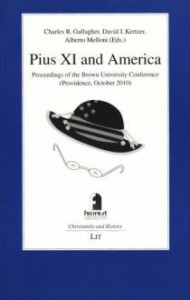 In their various explorations and elaboration of the papers from the Vatican archive, it is hardly surprising that these authors paint a favorable picture of the Vatican diplomats, especially of Cardinal Pacelli. Rob Ventresca, for example, in his survey of Pius XI, Eugenio Pacelli and the Italian Fascism, agrees with Castagna that Pacelli’s moderating influence was designed to head off any open breach with Mussolini’s aggressive tactics over Abyssinia, and to promote a negotiated settlement of the dispute. The price paid was to mute the Church’s public criticism of the morality of Mussolini’s imperial misadventures, which Ventresca suggests set a pattern to be repeated later with the even more serious breaches of the peace by Hitler. In her essay, Emma Fattorini takes a more critical attitude. She repeats the theme of her book Hitler, Mussolini and the Vatican, pointing to the profound differences of position and temperament between Pius XI and Pacelli. Fattorini clearly prefers the irrepressible intransigence of the elderly pontiff. Jacques Kornberg is even more critical, suggesting that both Pius XI and Pius XII failed to conduct themselves according to their own moral standards. The Vatican issued no outraged protests about the Nazis’ November 1938 Crystal Night pogrom because this was seen as not being a threat to Catholic interests. In Kornberg’s view, civic rights, or universal human rights, were not a matter for the papacy’s concern. On the other hand, Fr. Robert Trisco, in recounting the furor over the outspoken criticisms of Hitler and the Nazi regime made by Cardinal Mundelein of Chicago in May 1937, praises Pacelli for castigating privately the malicious invectives and disparagement perpetrated against the Holy See by the Nazi leadership. Trisco also describes the widespread support for Cardinal Mundelein given by different sections of American opinion, including President Roosevelt. Indeed Roosevelt took Mundelein’s advice about the difficult issue of how to restore diplomatic relations between the United States and the Vatican, but otherwise does not feature much in these essays. In all, there are few surprises, since many of the contributors have already had their say elsewhere. But, as Charles Gallacher remarks, there are still unanswered questions, such as why Pius XI sent Pacelli to the United States in 1936, or what topics were covered when Roosevelt and Pacelli met privately at Hyde Park.
In their various explorations and elaboration of the papers from the Vatican archive, it is hardly surprising that these authors paint a favorable picture of the Vatican diplomats, especially of Cardinal Pacelli. Rob Ventresca, for example, in his survey of Pius XI, Eugenio Pacelli and the Italian Fascism, agrees with Castagna that Pacelli’s moderating influence was designed to head off any open breach with Mussolini’s aggressive tactics over Abyssinia, and to promote a negotiated settlement of the dispute. The price paid was to mute the Church’s public criticism of the morality of Mussolini’s imperial misadventures, which Ventresca suggests set a pattern to be repeated later with the even more serious breaches of the peace by Hitler. In her essay, Emma Fattorini takes a more critical attitude. She repeats the theme of her book Hitler, Mussolini and the Vatican, pointing to the profound differences of position and temperament between Pius XI and Pacelli. Fattorini clearly prefers the irrepressible intransigence of the elderly pontiff. Jacques Kornberg is even more critical, suggesting that both Pius XI and Pius XII failed to conduct themselves according to their own moral standards. The Vatican issued no outraged protests about the Nazis’ November 1938 Crystal Night pogrom because this was seen as not being a threat to Catholic interests. In Kornberg’s view, civic rights, or universal human rights, were not a matter for the papacy’s concern. On the other hand, Fr. Robert Trisco, in recounting the furor over the outspoken criticisms of Hitler and the Nazi regime made by Cardinal Mundelein of Chicago in May 1937, praises Pacelli for castigating privately the malicious invectives and disparagement perpetrated against the Holy See by the Nazi leadership. Trisco also describes the widespread support for Cardinal Mundelein given by different sections of American opinion, including President Roosevelt. Indeed Roosevelt took Mundelein’s advice about the difficult issue of how to restore diplomatic relations between the United States and the Vatican, but otherwise does not feature much in these essays. In all, there are few surprises, since many of the contributors have already had their say elsewhere. But, as Charles Gallacher remarks, there are still unanswered questions, such as why Pius XI sent Pacelli to the United States in 1936, or what topics were covered when Roosevelt and Pacelli met privately at Hyde Park.
These essays provide additional details in support of the overview given in Castagna’s book, and as such are a useful and reliable addition to our knowledge of papal diplomacy in the inter-war period.


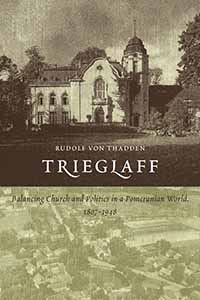
 The patriarch, Adolf von Thadden, inherited the estate after Napoleon’s defeat and was greatly influenced by the wave of pietistic fervor which swept across Germany in those years. He turned Trieglaff into a center for revivalist meetings for the whole of Pomerania. This was a strongly conservative faith which maintained an uncritical biblical fundamentalism and often expressed itself in sectarian excesses. But it sought to uphold the witness of the individual believer and to prevent the incursion of rationalist or secular ideas. In particular, the Trieglaffers resented the top-heavy controls exercised over the church by state officials, who obeyed the commands of the monarch King Frederick William III in uniting the Lutheran and Reformed adherents into one United Prussian Church. The result was a clash in the village and the secession of a group true to their former loyalties and calling themselves Old Lutherans. They even built their own church at the other end of the village which still survives today.
The patriarch, Adolf von Thadden, inherited the estate after Napoleon’s defeat and was greatly influenced by the wave of pietistic fervor which swept across Germany in those years. He turned Trieglaff into a center for revivalist meetings for the whole of Pomerania. This was a strongly conservative faith which maintained an uncritical biblical fundamentalism and often expressed itself in sectarian excesses. But it sought to uphold the witness of the individual believer and to prevent the incursion of rationalist or secular ideas. In particular, the Trieglaffers resented the top-heavy controls exercised over the church by state officials, who obeyed the commands of the monarch King Frederick William III in uniting the Lutheran and Reformed adherents into one United Prussian Church. The result was a clash in the village and the secession of a group true to their former loyalties and calling themselves Old Lutherans. They even built their own church at the other end of the village which still survives today.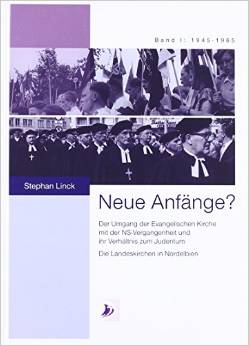
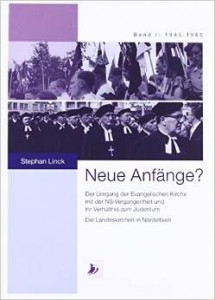 In Neue Anfänge? Der Umgang der Evangelischen Kirche mit der NS-Vergangenheit und ihr Verhältnis zum Judentum. Die Landeskirchen in Nordelbien. Band 1: 1945-1965, Stephan Linck analyses the situation in the four Protestant churches which united in 2012 to form the Evangelical Church of North Elbia. He had earlier organized a travelling exhibition which did much to break the silence about these churches’ failures in former years. His central point is that this part of Germany had a long history of extreme nationalism, backed by Lutheran authoritarianism. This made these congregations particularly susceptible to Nazi anti-Semitic propaganda and encouraged their extremist and anti-communist attitudes, which were only reinforced in this region after 1945, when so many refugees fled to the region to escape the Russian occupation and the subsequent Communist domination of eastern Europe. These churches’ active support of the refugees’ desire to regain their homelands, in Linck’s view, only exacerbated their reactionary political attitudes and entrenched their prejudices.
In Neue Anfänge? Der Umgang der Evangelischen Kirche mit der NS-Vergangenheit und ihr Verhältnis zum Judentum. Die Landeskirchen in Nordelbien. Band 1: 1945-1965, Stephan Linck analyses the situation in the four Protestant churches which united in 2012 to form the Evangelical Church of North Elbia. He had earlier organized a travelling exhibition which did much to break the silence about these churches’ failures in former years. His central point is that this part of Germany had a long history of extreme nationalism, backed by Lutheran authoritarianism. This made these congregations particularly susceptible to Nazi anti-Semitic propaganda and encouraged their extremist and anti-communist attitudes, which were only reinforced in this region after 1945, when so many refugees fled to the region to escape the Russian occupation and the subsequent Communist domination of eastern Europe. These churches’ active support of the refugees’ desire to regain their homelands, in Linck’s view, only exacerbated their reactionary political attitudes and entrenched their prejudices.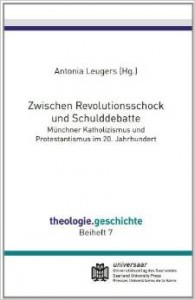 These same features were on display in the Bavarian Protestant Church, too. They are the subject of Björn Mensing’s chapter in the collection of essays edited by Antonia Leugers, entitled Zwischen Revolutionsschock und Schulddebatte. Münchner Katholizismus und Protestantismus im 20. Jahrhundert. Mensing also comments acerbically on the apologetic and self-serving accounts of Bavarian Protestantism written by survivors, which excused the early and enthusiastic support given to Adolf Hitler as stemming from a desire to prevent a victory for Communism and as a sign of the “rechristianising” of a war-torn Germany. Those few voices calling for a more critical and less self-justifying account of the Nazi years were quickly sidelined. So too those who had been involved in the 1944 plot to overthrow Hitler and had been executed as a result, such as Dietrich Bonhoeffer, were regarded by the majority of the Bavarian Protestant leaders as “traitors to the national cause”. Mensing, who is now the Pastor of the Church of Reconciliation erected in the former concentration camp at Dachau, recounts with some bitterness the opposition to the building of this chapel by the former pro-Nazi pastor of the neighboring parish, clearly backed by the majority of his parishioners. It was only after the generation of participants in the Nazi years had all passed from the scene that a more fitting recognition of the church’s failures and a new sense of repentance could be encouraged. Mensing blames the continuing influence of the conservative leadership in the Bavarian Protestant Church for the slowness with which a greater sense of repentance and reconciliation has at last been adopted. But in view of the entrenched national conservatism of most Bavarian Protestants, Mensing believes there is still a long way to go before the deficiencies of the past can be finally laid to rest.
These same features were on display in the Bavarian Protestant Church, too. They are the subject of Björn Mensing’s chapter in the collection of essays edited by Antonia Leugers, entitled Zwischen Revolutionsschock und Schulddebatte. Münchner Katholizismus und Protestantismus im 20. Jahrhundert. Mensing also comments acerbically on the apologetic and self-serving accounts of Bavarian Protestantism written by survivors, which excused the early and enthusiastic support given to Adolf Hitler as stemming from a desire to prevent a victory for Communism and as a sign of the “rechristianising” of a war-torn Germany. Those few voices calling for a more critical and less self-justifying account of the Nazi years were quickly sidelined. So too those who had been involved in the 1944 plot to overthrow Hitler and had been executed as a result, such as Dietrich Bonhoeffer, were regarded by the majority of the Bavarian Protestant leaders as “traitors to the national cause”. Mensing, who is now the Pastor of the Church of Reconciliation erected in the former concentration camp at Dachau, recounts with some bitterness the opposition to the building of this chapel by the former pro-Nazi pastor of the neighboring parish, clearly backed by the majority of his parishioners. It was only after the generation of participants in the Nazi years had all passed from the scene that a more fitting recognition of the church’s failures and a new sense of repentance could be encouraged. Mensing blames the continuing influence of the conservative leadership in the Bavarian Protestant Church for the slowness with which a greater sense of repentance and reconciliation has at last been adopted. But in view of the entrenched national conservatism of most Bavarian Protestants, Mensing believes there is still a long way to go before the deficiencies of the past can be finally laid to rest.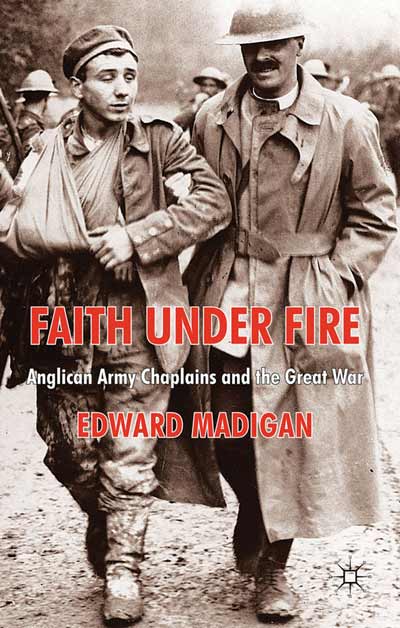
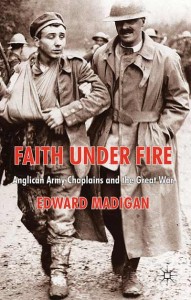 Edward Madigan’s valuable study begins with a comprehensive survey of the literature about chaplains and their war-time contributions, some written by chaplains themselves, such a Ernest Raymond’s Tell England, or the far more influential novel by Robert Graves, Goodbye to all That. Many of these books presented a largely negative picture of the war records of these chaplains, finding that they were generally not respected by either officers or men, being considered inadequate to the tasks they faced.
Edward Madigan’s valuable study begins with a comprehensive survey of the literature about chaplains and their war-time contributions, some written by chaplains themselves, such a Ernest Raymond’s Tell England, or the far more influential novel by Robert Graves, Goodbye to all That. Many of these books presented a largely negative picture of the war records of these chaplains, finding that they were generally not respected by either officers or men, being considered inadequate to the tasks they faced.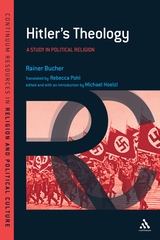 The bulk of the book, which is written in a somewhat convoluted Germanic style, but competently translated into English by Rebecca Pohl, is based on a thorough examination of all of Hitler’s surviving speeches and writings. Bucher’s main contention is that Hitler’s worldview was far more than just an ideology adopted for tactical reasons in order to gain political support. Rather, in Bucher’s view, Hitler’s ideas constituted a theology, even though it was an intellectually crude and merciless construct, and based on an abominable racism. Bucher is well aware that speaking of Hitler’s theology is provocative because it seems to associate what Christians believe with one of the worst criminals of our era. So he is careful to ensure that he cannot be accused of trying to undertake any kind of vindication. His task is therefore one of explanation rather than condemnation, let alone approbation. In this he succeeds with consummate skill.
The bulk of the book, which is written in a somewhat convoluted Germanic style, but competently translated into English by Rebecca Pohl, is based on a thorough examination of all of Hitler’s surviving speeches and writings. Bucher’s main contention is that Hitler’s worldview was far more than just an ideology adopted for tactical reasons in order to gain political support. Rather, in Bucher’s view, Hitler’s ideas constituted a theology, even though it was an intellectually crude and merciless construct, and based on an abominable racism. Bucher is well aware that speaking of Hitler’s theology is provocative because it seems to associate what Christians believe with one of the worst criminals of our era. So he is careful to ensure that he cannot be accused of trying to undertake any kind of vindication. His task is therefore one of explanation rather than condemnation, let alone approbation. In this he succeeds with consummate skill.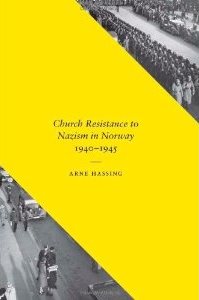 He begins with an account of the Norwegian reception of the German Church Struggle in the pre-1940 period, since he rightly notes that both nations had Lutheranism as their official Protestant state religion and as their traditional focus of loyalty. The challenge of Nazi ideology and its attempt to corrupt Luther’s teachings was therefore immediately recognized. Hassing pays tribute to the skilful manner in which Bishop Berggrav differentiated the Norwegian understanding of Luther from that held by many theologians in Germany. He also notes the skill with which the Norwegian church leaders were able to forge an alliance amongst themselves and resolve long-held theological antagonisms, in order to oppose the invaders and their supporters in Norway.
He begins with an account of the Norwegian reception of the German Church Struggle in the pre-1940 period, since he rightly notes that both nations had Lutheranism as their official Protestant state religion and as their traditional focus of loyalty. The challenge of Nazi ideology and its attempt to corrupt Luther’s teachings was therefore immediately recognized. Hassing pays tribute to the skilful manner in which Bishop Berggrav differentiated the Norwegian understanding of Luther from that held by many theologians in Germany. He also notes the skill with which the Norwegian church leaders were able to forge an alliance amongst themselves and resolve long-held theological antagonisms, in order to oppose the invaders and their supporters in Norway.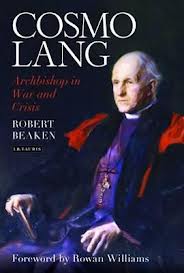 Lang was born in Scotland, the son of a distinguished Presbyterian minister. When he came to study in Oxford, he switched allegiance to a moderate high Anglicanism and opted to be ordained in the Church of England. His gifts were obvious and he quickly gained preferment. In fact, in 1890, at the age of 36, he became a suffragan or assistant bishop, and at the age of 44 was selected to be Archbishop of York, the second highest appointment in the English hierarchy. He spent twenty years there, before being moved to Canterbury in 1928. In Beaken’s view, it was hardly his fault that he was appointed to York too early and to Canterbury too late in life. He was a loner and a workaholic, and a bachelor who had difficulty in relating to others even of his own class and complexion. As a result, he never established any personal associations and had no following to uphold his legacy. This biography will, however, serve to record his achievements and gives a sympathetic analysis of Lang’s actions during the difficult and traumatic years of the 1930s.
Lang was born in Scotland, the son of a distinguished Presbyterian minister. When he came to study in Oxford, he switched allegiance to a moderate high Anglicanism and opted to be ordained in the Church of England. His gifts were obvious and he quickly gained preferment. In fact, in 1890, at the age of 36, he became a suffragan or assistant bishop, and at the age of 44 was selected to be Archbishop of York, the second highest appointment in the English hierarchy. He spent twenty years there, before being moved to Canterbury in 1928. In Beaken’s view, it was hardly his fault that he was appointed to York too early and to Canterbury too late in life. He was a loner and a workaholic, and a bachelor who had difficulty in relating to others even of his own class and complexion. As a result, he never established any personal associations and had no following to uphold his legacy. This biography will, however, serve to record his achievements and gives a sympathetic analysis of Lang’s actions during the difficult and traumatic years of the 1930s. The tone is of course laudatory, rather than critical. But at least these papers help to set the boundaries within which Bonhoeffer scholarship can flourish today, and thus exclude some of the more exaggerated theories. For example, in recent years, Bonhoeffer has been characterized as a revolutionary, an assassin and an American Evangelical. None of these authors was invited. On the other hand, it is also clear that the theologians and the historians are not always talking on the same wave-length. The latter’s approach is empirical, concrete and historical, whereas the former seem often to engage in highly theoretical, even metaphysical interpretations, which rarely touch down on the solid earth of Nazi Germany. So this book should help to encourage some cross-fertilization in the debates about Bonhoeffer’s legacy.
The tone is of course laudatory, rather than critical. But at least these papers help to set the boundaries within which Bonhoeffer scholarship can flourish today, and thus exclude some of the more exaggerated theories. For example, in recent years, Bonhoeffer has been characterized as a revolutionary, an assassin and an American Evangelical. None of these authors was invited. On the other hand, it is also clear that the theologians and the historians are not always talking on the same wave-length. The latter’s approach is empirical, concrete and historical, whereas the former seem often to engage in highly theoretical, even metaphysical interpretations, which rarely touch down on the solid earth of Nazi Germany. So this book should help to encourage some cross-fertilization in the debates about Bonhoeffer’s legacy.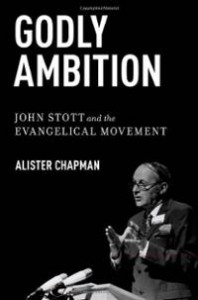 John Stott was born in 1921 in a well-to-do professional family and, as was the custom, went to one of England’s most prestigious private (i.e. “public”) schools, Rugby, where his talents led to his appointment as Head Boy. At the age of seventeen, he had a classic evangelical conversion experience and invited Jesus Christ into his life. This was largely due to the influence of an itinerant Anglican clergyman named Eric Nash, whose mission it was to attract young public school leaders and lead them to a life of Christian witness and service . Nash remained Stott’s mentor for many years and undoubtedly encouraged him to seek ordination as a Church of England priest. This decision was to be a great disappointment to Stott’s family, as was (even more so) his resolve not to be conscripted to do military service at the very moment when the Second World War broke out in 1939. Stott took advantage of the loop-hole which allowed students in training for the ministry to be exempt from military service. He was thus one of the few young men taking his war-time undergraduate degree at Trinity College, Cambridge, after which he moved on to the nearby theological college, Ridley Hall, which resolutely maintained the evangelical tradition of those martyrs burnt at the stake by Queen Mary four centuries earlier.
John Stott was born in 1921 in a well-to-do professional family and, as was the custom, went to one of England’s most prestigious private (i.e. “public”) schools, Rugby, where his talents led to his appointment as Head Boy. At the age of seventeen, he had a classic evangelical conversion experience and invited Jesus Christ into his life. This was largely due to the influence of an itinerant Anglican clergyman named Eric Nash, whose mission it was to attract young public school leaders and lead them to a life of Christian witness and service . Nash remained Stott’s mentor for many years and undoubtedly encouraged him to seek ordination as a Church of England priest. This decision was to be a great disappointment to Stott’s family, as was (even more so) his resolve not to be conscripted to do military service at the very moment when the Second World War broke out in 1939. Stott took advantage of the loop-hole which allowed students in training for the ministry to be exempt from military service. He was thus one of the few young men taking his war-time undergraduate degree at Trinity College, Cambridge, after which he moved on to the nearby theological college, Ridley Hall, which resolutely maintained the evangelical tradition of those martyrs burnt at the stake by Queen Mary four centuries earlier.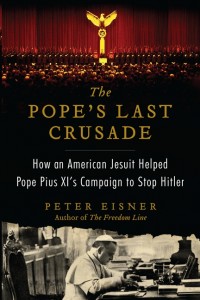 Briefly the story is as follows. Pope Pius XI (Achille Ratti) who reigned from 1922 to 1939 was increasingly alarmed and dismayed by the rise of Nazism and its flagrant and sustained attacks against both the Catholic Church and the Jews. Already in 1937, Pope Pius, after consulting the German bishops, had issued a vigorous protest in the Encyclical “Mit Brennennder Sorge”. But the results were disappointing. Hitler merely stepped up his persecution of the church, and encouraged his associates to be even more virulent in their campaigning against the Jews. But by 1938 the Pope had determined to protest again, specifically against the violent extremism in the Nazis’ racial and anti-Semitic ideology. By chance the Pope had come across a book written by LaFarge entitled Interracial Justice, which described the plight of blacks in the United States, and pleaded for the church to take a lead in combatting racism in that country. The parallels between racism in America and the dangers of anti-Semitism in Europe were easy to see.
Briefly the story is as follows. Pope Pius XI (Achille Ratti) who reigned from 1922 to 1939 was increasingly alarmed and dismayed by the rise of Nazism and its flagrant and sustained attacks against both the Catholic Church and the Jews. Already in 1937, Pope Pius, after consulting the German bishops, had issued a vigorous protest in the Encyclical “Mit Brennennder Sorge”. But the results were disappointing. Hitler merely stepped up his persecution of the church, and encouraged his associates to be even more virulent in their campaigning against the Jews. But by 1938 the Pope had determined to protest again, specifically against the violent extremism in the Nazis’ racial and anti-Semitic ideology. By chance the Pope had come across a book written by LaFarge entitled Interracial Justice, which described the plight of blacks in the United States, and pleaded for the church to take a lead in combatting racism in that country. The parallels between racism in America and the dangers of anti-Semitism in Europe were easy to see.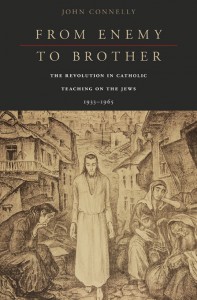
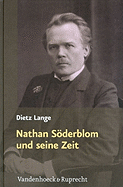 A new biography has recently been published in Germany of Nathan Söderblom, the most prominent Protestant church leader in the decade of the 1920s. The author, Dietz Lange, is the emeritus professor of Systematic Theology in Göttingen, and in this laudatory but leisurely account of Söderblom’s career, the emphasis is placed on the evolution of Söderblom’s intellectual ideas and his relations with other scholars and theologians of his time. Lange supplements but does not supplant the standard biography in English, written nearly half a century ago by Bengt Sundkler, which concentrated on Söderblom’s main claims to fame, his championships of the peace endeavours during the first world war, and his leadership of the ecumenical movement in the aftermath.
A new biography has recently been published in Germany of Nathan Söderblom, the most prominent Protestant church leader in the decade of the 1920s. The author, Dietz Lange, is the emeritus professor of Systematic Theology in Göttingen, and in this laudatory but leisurely account of Söderblom’s career, the emphasis is placed on the evolution of Söderblom’s intellectual ideas and his relations with other scholars and theologians of his time. Lange supplements but does not supplant the standard biography in English, written nearly half a century ago by Bengt Sundkler, which concentrated on Söderblom’s main claims to fame, his championships of the peace endeavours during the first world war, and his leadership of the ecumenical movement in the aftermath.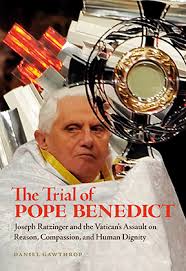 Writing with considerable journalistic flair, but of course without any Vatican official documentation, Gawthrop presents us with a highly critical account of Ratzinger’s career. To be sure, he allows that, during the Council’s sessions, Ratzinger, then a theological advisor to one of the German Cardinals, supported many of the reformist ideas. But only a few years later, while he was teaching at Germany’s most prestigious university of Tübingen, he was deeply offended by the virulent student radicalism embracing a “Marxist messianism”. As a result he turned away from his colleagues such as Hans Kung and other progressive theologians. Shortly afterwards he retreated to the rural backwater of Regensburg in his native Bavaria, and began to prepare his theological counter-offensive to Vatican II.
Writing with considerable journalistic flair, but of course without any Vatican official documentation, Gawthrop presents us with a highly critical account of Ratzinger’s career. To be sure, he allows that, during the Council’s sessions, Ratzinger, then a theological advisor to one of the German Cardinals, supported many of the reformist ideas. But only a few years later, while he was teaching at Germany’s most prestigious university of Tübingen, he was deeply offended by the virulent student radicalism embracing a “Marxist messianism”. As a result he turned away from his colleagues such as Hans Kung and other progressive theologians. Shortly afterwards he retreated to the rural backwater of Regensburg in his native Bavaria, and began to prepare his theological counter-offensive to Vatican II.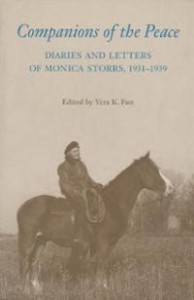 Monica was a cultured English gentlewoman who had volunteered in 1931 to come out to western Canada to help build up the Anglican Church amongst the isolated and often impoverished homesteaders of the Peace Dictrict. Luckily, at the end of 1938, Monica was taking a home leave, so she was able to meet the two German boys when they arrived in England on one of the “Kindertransporte” which rescued several thousand children in the few short months before the outbreak of war.
Monica was a cultured English gentlewoman who had volunteered in 1931 to come out to western Canada to help build up the Anglican Church amongst the isolated and often impoverished homesteaders of the Peace Dictrict. Luckily, at the end of 1938, Monica was taking a home leave, so she was able to meet the two German boys when they arrived in England on one of the “Kindertransporte” which rescued several thousand children in the few short months before the outbreak of war.